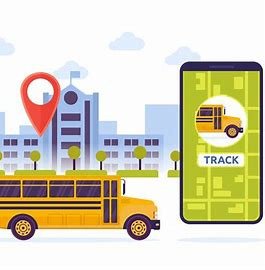A college bus tracking app is designed to provide students, parents, and college administrators with real-time information about the location and status of college buses. This helps ensure safety, efficiency, and convenience in transportation. Here's a comprehensive summary of what such an app typically includes:
College Bus Tracking App Summary
1. Purpose and Objectives
- Purpose: To provide real-time tracking of college buses, ensuring safety, punctuality, and convenience for students and staff.
- Objectives:
- Enhance safety by providing real-time bus locations.
- Improve punctuality and reduce waiting times.
- Facilitate efficient route management and scheduling.
- Provide timely notifications and updates to users.
2. Key Features
- Real-Time Tracking: GPS-based tracking of buses, allowing users to see the current location on a map.
- Route Information: Detailed information about bus routes, including stops and estimated arrival times.
- Notifications: Alerts for bus arrivals, delays, route changes, and other important updates.
- Student Check-In/Check-Out: Options for students to check in and out, ensuring accurate attendance tracking.
- Parental Access: Features allowing parents to track their child's bus and receive notifications.
- Driver Interface: A user-friendly interface for bus drivers to update status and communicate with administrators.
- Admin Dashboard: Comprehensive dashboard for college administrators to manage routes, schedules, and track bus performance.
- Emergency Alerts: Quick communication options for emergencies, including direct contact with bus drivers and emergency services.
3. User Roles and Interfaces
- Students: Access to real-time tracking, route information, and notifications.
- Parents: Ability to monitor bus location and receive alerts about their child's bus.
- Bus Drivers: Interface to update route status, communicate with administrators, and manage schedules.
- College Administrators: Dashboard to manage and monitor the entire bus fleet, routes, and schedules.
4. Technology Stack
- GPS and Mapping: Integration with GPS devices and mapping services like Google Maps or OpenStreetMap.
- Mobile App: Native or cross-platform mobile applications for Android and iOS.
- Backend Server: Server infrastructure to handle data processing, storage, and communication.
- Database: Secure and scalable database to store user data, bus schedules, routes, and tracking information.
- Push Notifications: Service to send real-time notifications to users about bus status and updates.
- Security: Robust security protocols to protect user data and ensure privacy.
5. Benefits
- Safety: Enhances safety by allowing parents and administrators to monitor bus locations and student check-ins.
- Convenience: Reduces waiting times and uncertainties by providing accurate arrival times and updates.
- Efficiency: Optimizes route planning and management, leading to better utilization of resources.
- Communication: Facilitates efficient communication between students, parents, drivers, and administrators.
- Accountability: Provides transparent and accurate records of bus routes, schedules, and student attendance.
6. Challenges
- GPS Accuracy: Ensuring reliable and accurate GPS tracking, especially in areas with poor signal.
- Data Privacy: Protecting the privacy of students and ensuring data security.
- Connectivity: Maintaining app functionality in areas with limited internet connectivity.
- User Adoption: Encouraging students, parents, and staff to consistently use the app.
- Maintenance: Regular updates and maintenance to address bugs, add features, and improve performance.
7. Future Enhancements
- AI and Machine Learning: Using AI to predict bus delays and optimize routes based on traffic conditions.
- Integration with Other Systems: Connecting with college administrative systems for better data synchronization.
- Enhanced Communication: Adding features for real-time chat or voice communication between users and drivers.
- Environmental Impact: Implementing features to monitor and reduce the environmental impact of the bus fleet.
- Advanced Analytics: Providing detailed analytics and reports for administrators to improve decision-making.
Example of a College Bus Tracking App
User Scenario
- Students: Open the app to check the real-time location of their bus and see an estimated arrival time at their stop.
- Parents: Receive notifications when the bus is nearing the pickup or drop-off point, ensuring peace of mind.
- Bus Drivers: Use the driver interface to start the route, check off stops, and send alerts if running late.
- Administrators: Monitor all buses on a single dashboard, adjust routes as needed, and communicate directly with drivers.
Technology Stack
- Mobile App: Developed using React Native for cross-platform compatibility.
- Backend Server: Node.js with Express for handling API requests and data processing.
- Database: MongoDB for scalable data storage.
- Mapping Service: Google Maps API for real-time tracking and route display.
- Push Notifications: Firebase Cloud Messaging for reliable notification delivery.
- Security: Implementing OAuth 2.0 for secure user authentication and data encryption.
This structured summary provides a comprehensive overview of a college bus tracking app, detailing its purpose, features, technology, benefits, challenges, and potential future enhancements.
 English
English
 العربية
العربية
 中文語言
中文語言
 हिंदी भाषा
हिंदी भाषा
 हespañol
हespañol
 русский
русский
 Português
Português
 Le français
Le français
 Deutsch
Deutsch
 ภาษาไทย
ภาษาไทย
 Português
Português


Add New Comment